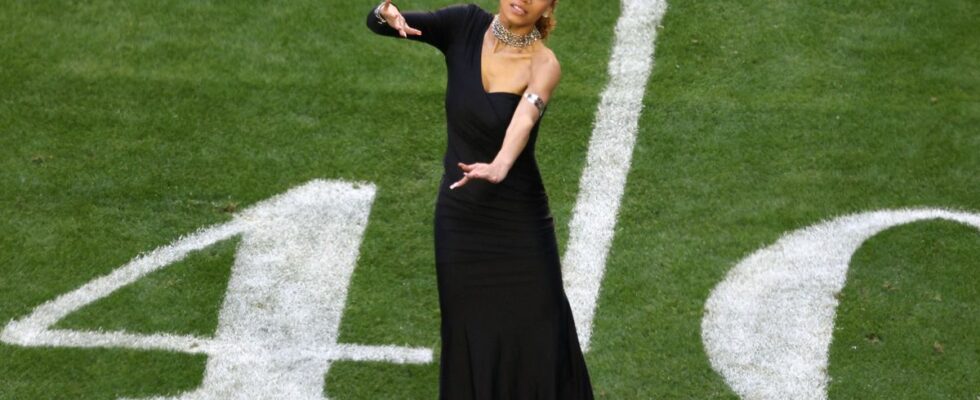While Rihanna, in a red jumpsuit on a levitating platform, delivered a highly anticipated performance during the Super Bowl halftime, it was another performer who almost stole the show. Black dress and long nails, precise and frenzied gestures, Justina Miles, sign language interpreter, ignited the crowd… And the canvas. His interpretation of Bitch Better Have My Money in sign language quickly made the rounds on social networks, in particular Tik Tok and Twitter, and fascinated Internet users. His performance has been seen millions of times on social networks, which has given a spotlight to chansigne, a discipline still little known in the world of hearing people.
Justina Miles, 20, is the first deaf woman to perform the Super Bowl show in sign language. Already well known on Tik Tok, the young woman from Philadelphia had become known for her cover songs. During the press conference for the most watched sporting event on television, she affirmed her pride in signing this performance as a black and deaf woman, “to bring this emancipation to millions and millions of deaf black people in the whole country, who have never seen this before”.
Chansigne, an artistic discipline that is too little known
Chansigne, which refers to the translation into sign language, not just of the lyrics of the songs, but of the entire melody, is practiced by sign language interpreters, hearing or deaf/hard of hearing. Far from being a simple translation, it is a true artistic discipline: if certain singers or songwriters take over existing songs by translating and interpreting them; others create their own songs in chant, adding rhythm and melody through body movement. Far from being improvised, the discipline requires a transcription and adaptation of signed songs.
If the Super Bowl gave the practice a spotlight, it is not new: the chansign has been around for many years. Online, songwriter collectives make their discipline visible on YouTube or Tik Tok, and many songwriters travel to international stages and festivals to make concerts accessible to deaf and hard of hearing people. Thus, in 2022, the Philharmonie de Paris offered many concerts, including the two dates of MC Solaar, in collaboration with the Integraal collective, which changed the rapper’s texts. Elsewhere in the world, more and more artists are using sign language interpreters, such as Linkin Park or the metal band Slayer.
Giving more space to deaf and hard of hearing music lovers
However, some festivals have taken up the subject, offering tools to allow deaf or hard of hearing people to enjoy the show: since 2018, some have offered vibrating backpacks, which allow them to feel the vibrations of the music. The issue of accessibility to festivals and concerts has long been raised by people with disabilities.
The presence of Justina Miles at the Super Bowl is a symbolic event for the deaf and hard of hearing community: the accessibility of music festivals and concerts remains complex. The call for sign language interpreters remains limited, due to a lack of financial means (particularly since the health crisis) or because the organizers have forgotten. Here’s hoping it’s more and more common to see a sign language interpretation of our favorite artists, on screen or on stage.

